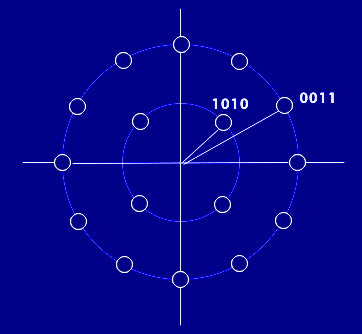asymmetric phase shift keying (APSK)
APSK modulation (Asymmetric PhaseShift Keying) belongs to the multivalued phase shift keying, in which the bit groups are represented by different phase angles and different amplitudes. Asymmetric phase shift keying (APSK) is similar to quadrature amplitude modulation( QAM) and quadrature phase shift keying( QPSK).
In APSK modulation, the bit groups are not distributed with the same number on two levels, but the bit groups modulated with higher level are numerically larger. For example, if quadbits, bit groups of four bits, are modulated in APSK, then the 16 bit values are modulated with two levels, but twelve of the sixteen bit groups are modulated with the higher amplitude, and the remaining four bit groups are modulated with the lower amplitude.
This has the advantage that the bit groups with the smaller levels are not so close to each other. In the phase star you can see two rings. The inner one with the lower amplitude has four quadbits, the outer one twelve.
APSK upsampling is used in DVB-S2, among others.

